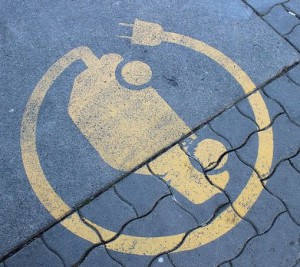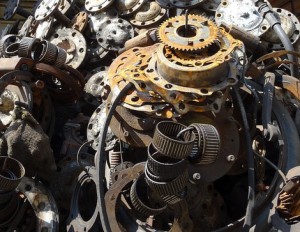While the world is gradually become more aware of sustainability, the automotive industry is still often behind the times. Just take a look outside and see how many hybrids or electric cars are interspersed within normal traffic. Despite having the technology, petrol-based vehicles are the majority. While new technologies offer hope for the future, one has to sometimes ask: What would sustainable driving even look like? Is it achievable? What factors are standing in its way? Presented below are a few pieces that demand attention if we intend to move towards more sustainable driving.
Natural Fuel Sources

The biggest drawback of motoring, in terms of carbon emissions, is the fuel source. What about biofuels? This is easy enough to create and is legal to use in many parts of the world. The problem doesn’t just lie in awareness, but also with manufacturers. Pure biofuel works in a number of diesel vehicles, but causes problems in those that use in-steam fuel injection. This is done to help regular diesel (itself often cut with biofuel) to pass emissions standards – perhaps, in the near future, these standards should be changed to adopt the likes of biofuel entirely. The technology is certainly ready for the change.
Of course, biofuels also compete with food crops for land space. As it stands, biofuel is in direct competition with traditional agriculture and, with a rising global population, the demand for both is only going to increase.
Electric Fuel Sources

Petrol and diesel both cause extensive damage and are clearly unsustainable options. While we are seeing a viable alternative in the form of the electric car, this has severe limitations. How many customers can use such a vehicle if there are no charge outlets within range of where they wish to go? Many people will not adopt electric vehicles until charging stations are within reach, but these stations will not appear unless the technology is widely adopted.
Similarly, one must also look at the cost of ‘refilling’ cars this way, in addition to the cost of buying a brand new car. Regardless of the technology, the cost will always be a big concern to the average driver. It’s the reason why people invest in economy tyres for greater rolling resistance. Not only does electric fuel need to be cheaper than the current methods, it needs to do enough to bring drivers out of their comfort zone.
There are also a number of sustainability factors to be considered, such as where the power comes from. If the power itself isn’t derived from sustainable sources (such as solar, hydro or wind power), then the car still has a carbon footprint. Environmentally conscious drivers also need to consider what the car’s fuel cell is made of. Early electric and hybrid cars used hydrogen fuel cells, yet the process of producing this hydrogen can have quite a big impact, as it often requires natural gas or coal.
Car Tyre & Component Rubber

One area of technology that is improving with greener features is the humble tyre. For those that don’t know, there’s actually a complicated structure to car tyres –they aren’t just rubber moulds. Current tyres often use a blend of natural rubber (from the Hevea rubber tree) and synthetic, oil-based variants. Native to Brazil, the Hevea tree requires hot conditions, placing it in direct competition with agriculture, similar to biofuel. Additionally, because of its nature as a cloned plant, it’s highly susceptible to disease and climate change.
Fortunately, this may soon change as Goodyear started making experimental tyres entirely with rubber from Guayule –a desert shrub in Mexico and the southern U.S. This has the great potential to produce more natural rubber, removing the need for synthetic options entirely. One major benefit here is that, as an arid plant, the Guayule shrub could potentially grow in less arable land, removing it from the competition for farmable land space. Toyota is also making similar innovations, utilising biosynthetic rubbers in engine parts, such as various hoses.
Body Materials

No matter what it runs on, all new cars feature the same old materials. Metal, for instance, is used throughout on the bodywork and parts. Depending on who you ask common figures suggest new cars have around 25% to 95% recycled steel – which means at least 5% is brand new. Yet almost all the steel from cars gets recycled, so this is a question of demand out meeting supply. With a greater push for Aluminium –itself another material that can recycled effectively– new technologies can capitalise on these resources.
Replaceable Components

On a similar note, what about the need to replace parts? Considering that parts are often made of natural minerals and resources, such as oil and metal, we should strive to replace these as little as possible. Even existing green improvements, such as catalytic converters, are a problem –these require rare earth metals such as platinum, palladium and rhodium.
While these converters can be recycled by experts, it highlights a significant problem in the automotive industry. By clinging to old oil-based fuels, we still use converters (or particulate filters in the case of diesel) and the compromises that come with them. If the industry was using electricity and biofuel, we wouldn’t need these components. Electric vehicles still use lightweight materials such, as aluminium and plastic, in their design but these can be recycled.
On the other hand, the issue of the fuel cell still remains. Hydrogen electric vehicles are still common, but the likes of Tesla have begun developing battery electric vehicles with lithium-ion cells. While not perfect, lithium-ion batteries are one of the greenest technologies available and can be recycled for added sustainability. One of the real problems for consumers, however, is whether or not manufacturers are willing to change rapidly. For companies that have invested millions into hydrogen fuel cells, it may make more sense for them, financially, to push this technology out. Right now, an older hydrogen car is much more affordable than the latest battery alternative.
Capturing Energy

Finally, as mentioned earlier, the power requirements for cars are a big drawback, even with electric vehicles. What if there was a way to harness electricity naturally, via the car itself? New technologies may just have this potential. This year alone, scientists are discovering how to enable solar panels to charge at night, as well as via raindrops, and solar coated windows. Who’s to say this technology can’t be fitted to cars in the next few years?
Technology is full of possibilities and has many sustainable answers for the automotive industry. Whether it’s replacing materials with replaceable, natural options –provided there is a sustainable way to meet demand– or employing a less harmful fuel source, many of these are either available today or undergoing active research. However, none of this will come to pass unless people, as drivers and customers, and the industry itself, embrace these new changes.
Giles Kirkland is a professional mechanic with a passion for green technology. He believes in promoting sustainable solutions and enjoys sharing his knowledge with other people.
MAHB-UTS Blogs are a joint venture between the University of Technology Sydney and the Millennium Alliance for Humanity and the Biosphere. Questions should be directed to joan@mahbonline.org
MAHB Blog: https://mahb.stanford.edu/blog/sustainable-driving/
The views and opinions expressed through the MAHB Website are those of the contributing authors and do not necessarily reflect an official position of the MAHB. The MAHB aims to share a range of perspectives and welcomes the discussions that they prompt.
